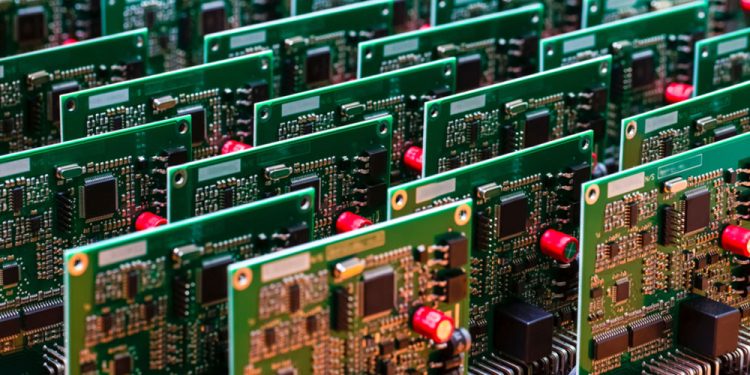The Ultimate Guide to Understanding aec-q200 Standards invites you into the realm of automotive electronic components, where it systematically unveils the complexities and importance of these standards. Whether you’re a seasoned professional navigating the roads of the automotive industry or simply intrigued by your vehicle’s inner workings this comprehensive guide serves as your roadmap.
Let’s actively explore the significance, key components covered, testing requirements, challenges faced by manufacturers, and the resources available for a deeper understanding and seamless implementation. Buckle up as we actively embark on this riveting journey through the fascinating realm of AEC-Q200 standards!
Importance of AEC-Q200 Standards in the Automotive Industry
AEC-Q200 standards, set by the Automotive Electronics Council (AEC), guarantee the reliability and safety of electronic components in automotive manufacturing. These standards, achieved through strict testing and qualification, elevate car technology to engineering excellence.
- Reliability and Safety: AEC-Q200 standards aren’t just rules – they’re the guardians of your vehicle, defining strict testing to mitigate risks, reduce recalls, and boost overall vehicle safety.
- Fair Competition and Consistent Quality: Compliance is the secret sauce, ensuring suppliers meet consistent quality benchmarks, fostering fair competition, and maintaining high-quality products across the industry.
- Enhanced Vehicle Performance: AEC-Q200 standards are the backstage crew behind your car’s star features – infotainment systems, ADAS, electric powertrains – ensuring they perform at their peak.
- Building Consumer Trust: Adherence to AEC-Q200 standards isn’t just a technicality – it’s a badge of honor, a commitment to reliability and safety that influences purchasing decisions and builds consumer trust.
Key Components Covered by AEC-Q200 Standards
The AEC-Q200 standards go beyond just a set of rules; they actively encompass a dynamic array of electronic components important to the full potential of your vehicle, providing the guardians of automotive excellence. Each component has its spotlight on the automotive stage, making this a thrilling lineup.
- Capacitors: These aren’t just ordinary electronic components; they’re the magic-makers subjected to specific requirements for capacitance values, tolerance levels, temperature stability, and even enduring strict endurance tests.
- Resistors: Not just silent soldiers, but dynamic defenders with stringent criteria for resistance values, temperature coefficients, power ratings, solderability, and resilience to thermal shock.
- Semiconductors (Diodes and Transistors): Ever wondered about the secret sauce behind your car’s intelligence? These components actively define forward voltage drop limits, leakage currents, and safeguard against electrostatic discharge (ESD) with sensitivity levels that rival a superhero’s instincts.
- Other Components (Relays, Fuses, Sensors, Connectors): Imagine a squad of automotive heroes with strict requirements regarding mechanical strength, durability, vibration resistance, and corrosion protection. They ensure your vehicle is not just a mode of transportation but a reliable and robust companion on the road of life.
Testing and Qualification Requirements for AEC-Q200 Compliance
Hold on tight as we dive into the adrenaline-pumping world of AEC-Q200 compliance – where meeting standards isn’t just a checklist, but an action-packed journey of strict testing and qualification! Get ready for a ride through the key testing points that actively define the reliability and performance of electronic components in the fast lane of automotive applications.
- Temperature Testing: Components aren’t just chilling; they’re actively braving temperature cycling tests, pushing the boundaries to evaluate their resistance to extreme temperature changes. It’s like a hot-and-cold challenge for electronic warriors!
- Mechanical Stress Testing: They actively undergo tests to prove their mettle under the relentless forces of vibration, shock, and bending. It’s a true test of durability – like a high-stakes action sequence for your electronic heroes.
- Environmental Testing: They actively face tests against the elements – humidity, moisture, salt spray, and even dust particles. It’s a survival game in the rugged terrain of automotive environments.
- Electrical Testing: During the electrifying challenge, they actively undergo tests to ensure they can handle the voltage levels and electrical loads.
- Additional Component-Specific Tests: It’s not a one-size-fits-all scenario. Depending on the type of component, additional tests actively come into play. For example, aging evaluation for ceramic capacitors – because even electronic components need to prove they age like fine wine.
The manufacturers ensure their components are battle-tested and ready to roll by actively adhering to these testing requirements, not just ticking boxes. It’s all about meeting stringent quality and reliability standards in various conditions, actively contributing to the safety, performance, and longevity of vehicles on the road.
Common Challenges in Meeting AEC-Q200 Standards
Implementing and complying with AEC-Q200 standards actively poses challenges for automotive manufacturers. Common hurdles actively include:
- Ensuring Consistent Quality: Meeting testing requirements actively demands significant investments in advanced equipment, challenging manufacturers to maintain consistent quality across diverse product lines.
- Managing the Supply Chain: Coordinating with numerous suppliers for compliance actively adds complexity to supply chain management.
- Temperature Cycling Tests: Components actively battling technical challenges as they strive to meet the demanding requirements for temperature cycling tests. It’s not just a test; it’s a high-stakes adventure, especially for those integrated into important automotive systems. These components are the unsung heroes facing the heat – literally!
- Long-Term Reliability: When it comes to long-term reliability, manufacturers face ongoing challenges. They face moisture sensitivities, solderability challenges, and relentless resistance to mechanical forces. They are on a long-haul journey that tests their endurance every step of the way.
Resources and Tools for Understanding and Implementing AEC-Q200 Standards
Access to the right resources and tools is actively important for understanding and implementing AEC-Q200 standards. Valuable resources actively include:
- Official AEC Website: Offers detailed information, documents, guidelines, training materials, webinars, and workshops.
- Industry Publications: Subscribing to automotive electronics-focused magazines actively provides insights into best practices, case studies, and emerging technologies.
- Conferences and Trade Shows: Events actively dedicated to automotive electronics offer networking opportunities and knowledge about advancements in AEC-Q200 standards.
- Simulation Software: Tailored software actively enables accurate modeling of electronic components under various conditions, identifying potential issues early in the design process.
- Third-Party Testing Laboratories: Accredited testing labs specializing in AEC-Q200 compliance actively offer expertise and resources throughout the product development cycle.
- Online Forums: Engaging in forums actively dedicated to automotive electronics topics provides a platform for sharing experiences, exchanging knowledge, and seeking advice from industry peers.
Taking advantage of these resources enhances understanding, streamlines compliance efforts, and ensures the quality and reliability of automotive electronic components.
Conclusion
AEC-Q200 standards play an important role in ensuring the reliability of electronic components in today’s ever-changing automotive industry. Complying with these standards goes beyond meeting OEM requirements to enhance overall product quality. Despite the complex testing procedures manufacturers can utilize resources such as industry publications and training courses to navigate AEC-Q200 compliance smoothly.
Incorporating these standards into the design and manufacturing processes is essential for producing top-quality automotive components. As technology continues to advance, staying committed to AEC-Q200 adherence remains important for success, innovation, and sustainability in this dynamic sector.












